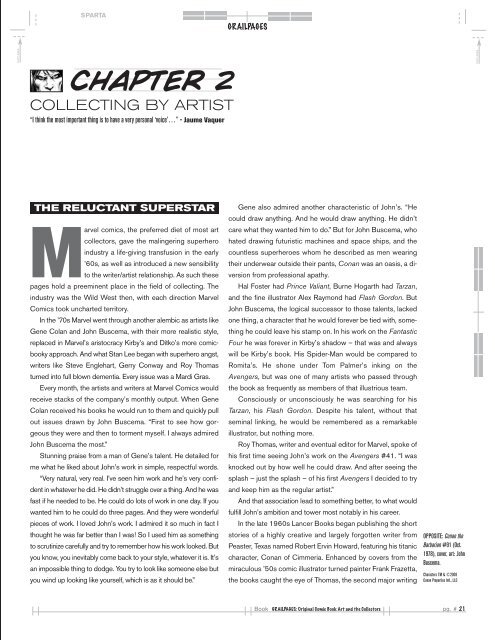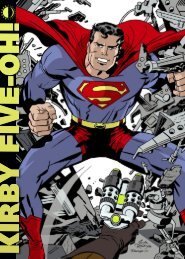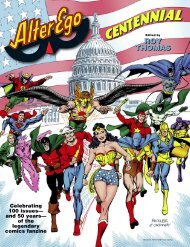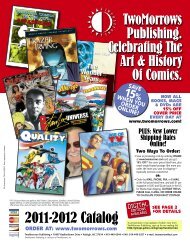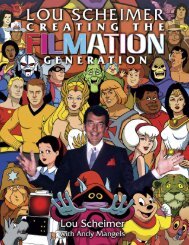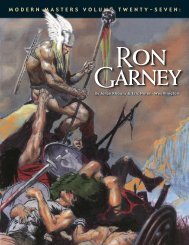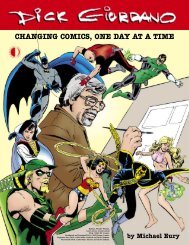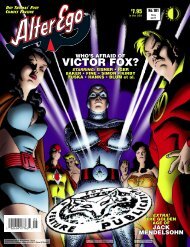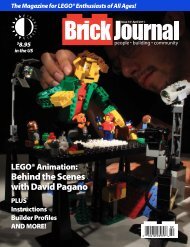Original Comic Book Art And The Collectors - TwoMorrows
Original Comic Book Art And The Collectors - TwoMorrows
Original Comic Book Art And The Collectors - TwoMorrows
Create successful ePaper yourself
Turn your PDF publications into a flip-book with our unique Google optimized e-Paper software.
COPY AREA<br />
SPARTA<br />
CHAPTER 2<br />
COLLECTING BY ARTIST<br />
“I think the most important thing is to have a very personal ‘voice’…” - Jaume Vaquer<br />
THE RELUCTANT SUPERSTAR<br />
Marvel comics, the preferred diet of most art<br />
collectors, gave the malingering superhero<br />
industry a life-giving transfusion in the early<br />
’60s, as well as introduced a new sensibility<br />
to the writer/artist relationship. As such these<br />
pages hold a preeminent place in the field of collecting. <strong>The</strong><br />
industry was the Wild West then, with each direction Marvel<br />
<strong>Comic</strong>s took uncharted territory.<br />
In the ’70s Marvel went through another alembic as artists like<br />
Gene Colan and John Buscema, with their more realistic style,<br />
replaced in Marvel’s aristocracy Kirby’s and Ditko’s more comicbooky<br />
approach. <strong>And</strong> what Stan Lee began with superhero angst,<br />
writers like Steve Englehart, Gerry Conway and Roy Thomas<br />
turned into full blown dementia. Every issue was a Mardi Gras.<br />
Every month, the artists and writers at Marvel <strong>Comic</strong>s would<br />
receive stacks of the company’s monthly output. When Gene<br />
Colan received his books he would run to them and quickly pull<br />
out issues drawn by John Buscema. “First to see how gorgeous<br />
they were and then to torment myself. I always admired<br />
John Buscema the most.”<br />
Stunning praise from a man of Gene’s talent. He detailed for<br />
me what he liked about John’s work in simple, respectful words.<br />
“Very natural, very real. I’ve seen him work and he’s very confident<br />
in whatever he did. He didn’t struggle over a thing. <strong>And</strong> he was<br />
fast if he needed to be. He could do lots of work in one day. If you<br />
wanted him to he could do three pages. <strong>And</strong> they were wonderful<br />
pieces of work. I loved John’s work. I admired it so much in fact I<br />
thought he was far better than I was! So I used him as something<br />
to scrutinize carefully and try to remember how his work looked. But<br />
you know, you inevitably come back to your style, whatever it is. It’s<br />
an impossible thing to dodge. You try to look like someone else but<br />
you wind up looking like yourself, which is as it should be.”<br />
GRAILPAGES<br />
Gene also admired another characteristic of John’s. “He<br />
could draw anything. <strong>And</strong> he would draw anything. He didn’t<br />
care what they wanted him to do.” But for John Buscema, who<br />
hated drawing futuristic machines and space ships, and the<br />
countless superheroes whom he described as men wearing<br />
their underwear outside their pants, Conan was an oasis, a diversion<br />
from professional apathy.<br />
Hal Foster had Prince Valiant, Burne Hogarth had Tarzan,<br />
and the fine illustrator Alex Raymond had Flash Gordon. But<br />
John Buscema, the logical successor to those talents, lacked<br />
one thing, a character that he would forever be tied with, something<br />
he could leave his stamp on. In his work on the Fantastic<br />
Four he was forever in Kirby’s shadow – that was and always<br />
will be Kirby’s book. His Spider-Man would be compared to<br />
Romita’s. He shone under Tom Palmer’s inking on the<br />
Avengers, but was one of many artists who passed through<br />
the book as frequently as members of that illustrious team.<br />
Consciously or unconsciously he was searching for his<br />
Tarzan, his Flash Gordon. Despite his talent, without that<br />
seminal linking, he would be remembered as a remarkable<br />
illustrator, but nothing more.<br />
Roy Thomas, writer and eventual editor for Marvel, spoke of<br />
his first time seeing John’s work on the Avengers #41. “I was<br />
knocked out by how well he could draw. <strong>And</strong> after seeing the<br />
splash – just the splash – of his first Avengers I decided to try<br />
and keep him as the regular artist.”<br />
<strong>And</strong> that association lead to something better, to what would<br />
fulfill John’s ambition and tower most notably in his career.<br />
In the late 1960s Lancer <strong>Book</strong>s began publishing the short<br />
stories of a highly creative and largely forgotten writer from<br />
Peaster, Texas named Robert Ervin Howard, featuring his titanic<br />
character, Conan of Cimmeria. Enhanced by covers from the<br />
miraculous ’50s comic illustrator turned painter Frank Frazetta,<br />
the books caught the eye of Thomas, the second major writing<br />
OPPOSITE: Conan the<br />
Barbarian #91 (Oct.<br />
1978), cover, art: John<br />
Buscema.<br />
Characters TM & ©2009<br />
Conan Properties Intl., LLC<br />
<strong>Book</strong> GRAILPAGES: <strong>Original</strong> <strong>Comic</strong> <strong>Book</strong> <strong>Art</strong> and the <strong>Collectors</strong> pg. # 21<br />
COPY AREA


